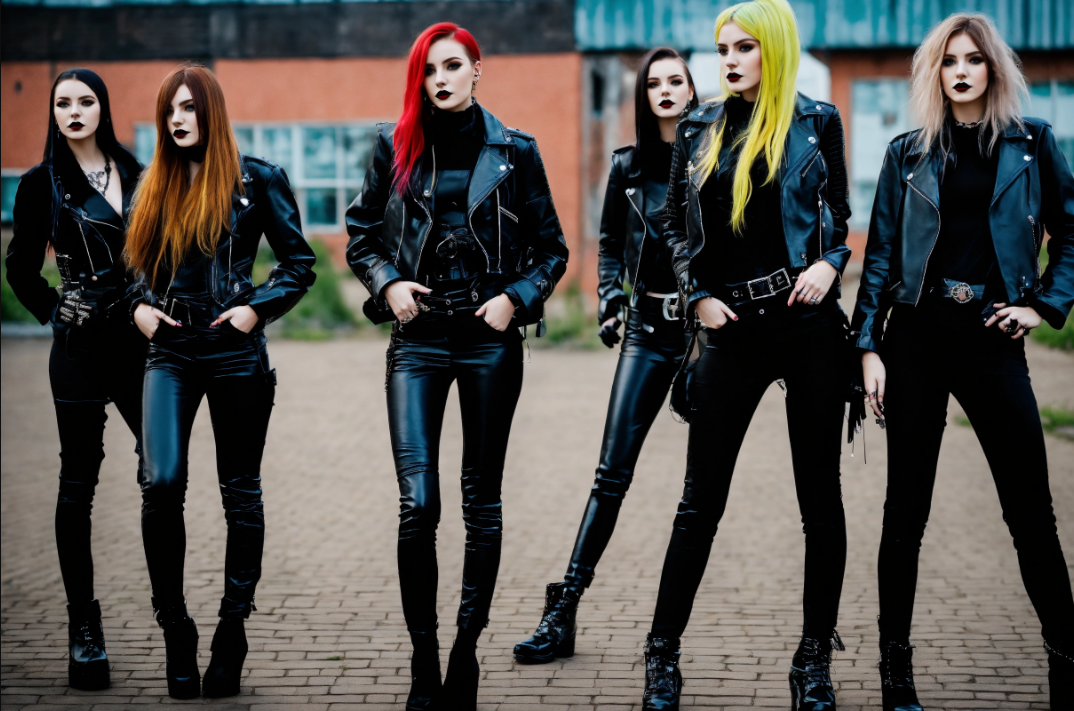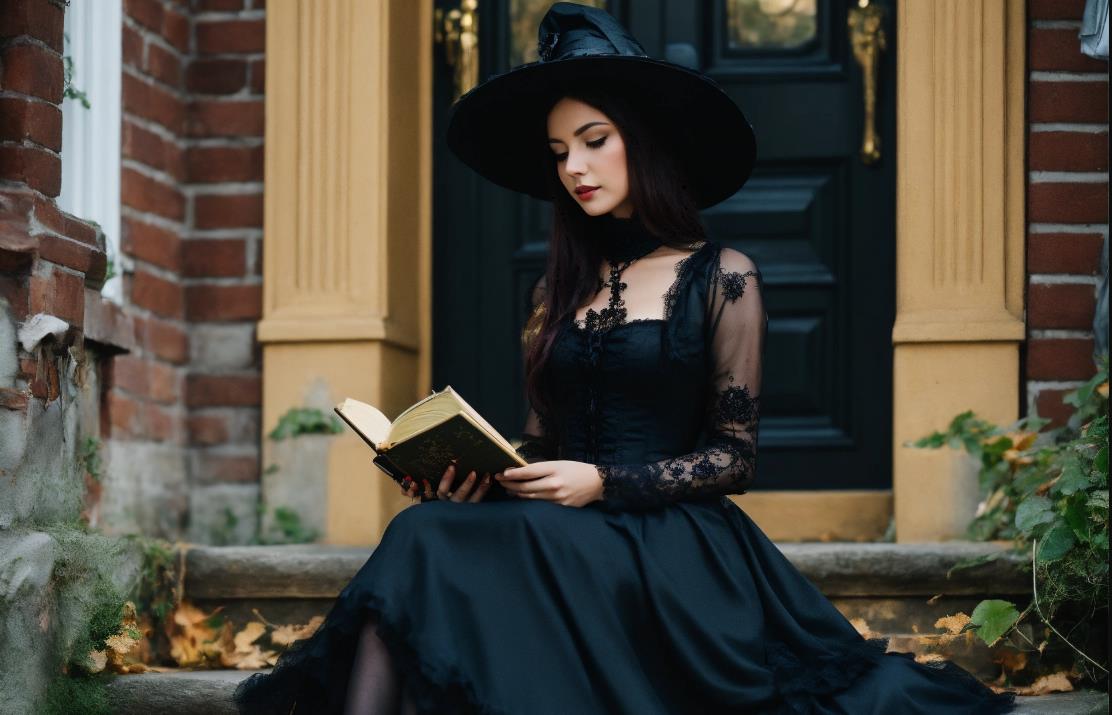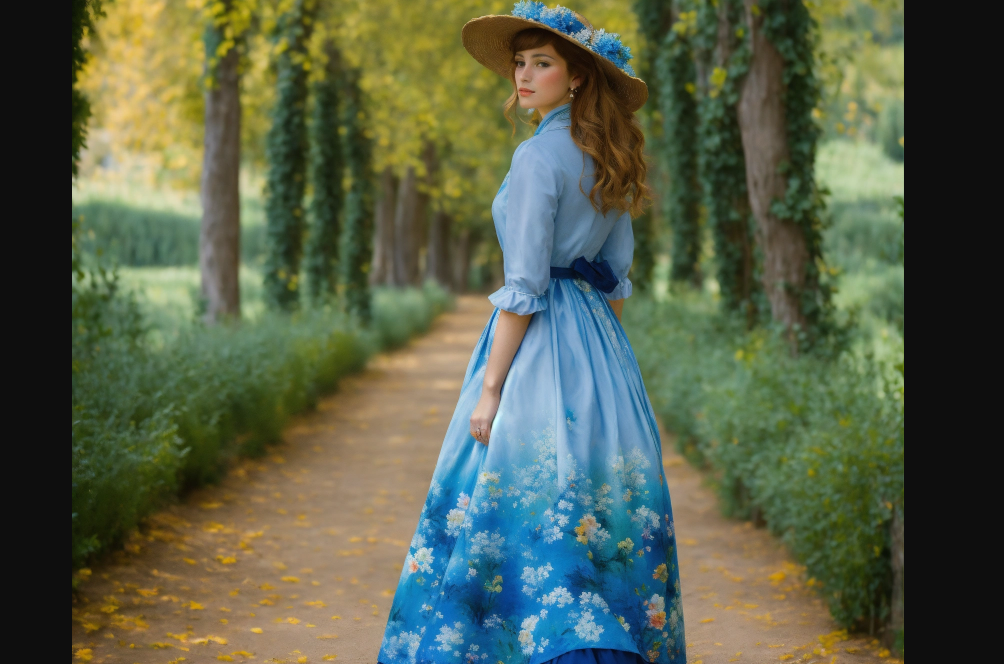80s Rock Fashion refers to the bold, rebellious, and extravagant clothing styles popularized by rock musicians during the 1980s. Rooted in self-expression and cultural defiance, this fashion movement blended elements of glam, punk, and metal, resulting in eye-catching outfits that defined the visual identity of an entire musical era. Characterized by ripped denim, studded leather jackets, teased hair, platform boots, and theatrical makeup, 80s Rock Fashion became a powerful form of identity and rebellion both on and off stage.
Drenched in attitude and unapologetic flair, 80s Rock Fashion wasn’t just about dressing up—it was about making a statement. It was loud, electrifying, and impossible to ignore. Whether it was Madonna’s lace-and-leather ensembles or Mötley Crüe’s glammed-out swagger, every outfit screamed confidence, chaos, and charisma, captivating audiences worldwide and influencing generations of fashion-forward rebels.
This iconic fashion trend was more than a passing phase—it was a cultural revolution. It reflected the untamed spirit of rock music, where individuality reigned supreme and rules were meant to be broken. Even today, the echoes of 80s Rock Fashion are seen on runways, in streetwear, and in the wardrobes of modern music legends, proving its timeless, edgy appeal.
Whether you’re looking to incorporate elements of this iconic era into your wardrobe or simply appreciate the cultural significance of these revolutionary styles, this comprehensive guide will take you through the wild, wonderful world of 80s rock fashion. The 80s rock style was defined by leather jackets, ripped denim, band tees, and sky-high hair that screamed rebellion.
Introduction: When Fashion Cranked the Volume to 11
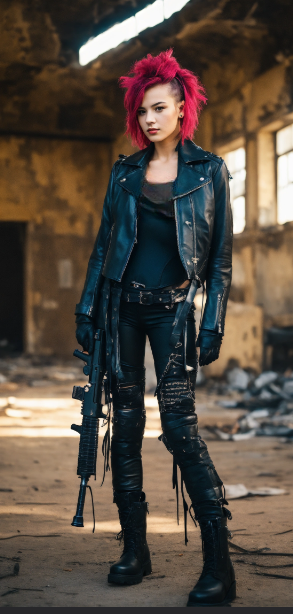
The 1980s created the perfect storm for fashion revolution. Reagan-era economic prosperity, the launch of MTV in 1981, and a youth culture hungry for self-expression collided to create one of the most visually distinctive periods in fashion history. 80s rock fashion wasn’t just clothing—it was armor for a cultural battlefield where identity was everything.
What made this era truly special was its fearless approach to style. Before social media and instant global communication, fashion trends emerged organically from clubs, concerts, and street scenes. The 80s music fashion scene developed distinct tribes, each with their own visual codes and style signatures.
For modern fashion enthusiasts, understanding 80s rock fashion offers more than nostalgia—it provides insight into how rebellion becomes style, and how style eventually becomes mainstream. Let’s dive into the subcultures and signature looks that defined this unforgettable era.
Hair Metal Hedonism: Spandex, Leather & Hairspray

Nothing says 80s rock fashion quite like hair metal. Born on Los Angeles’ Sunset Strip, bands like Mötley Crüe, Ratt, and Twisted Sister created a visual aesthetic as loud as their music. Channeling the 80s rock style today means mixing glam, grunge, and metal influences into one bold outfit.
The signature elements included:
- Teased hairstyles defying gravity (and environmental concerns)
- Skin-tight spandex pants in eye-searing colors
- Animal prints on everything from leggings to headbands
- Leather jackets adorned with chains, studs, and patches
- Strategic rips and tears in denim and t-shirts
- Bandanas tied around thighs, arms, or foreheads
- Layers upon layers of makeup for both men and women
“We spent more time on our hair than we did rehearsing,” – Bret Michaels of Poison
What’s fascinating about hair metal style was the contrast between bands. While Poison embraced a more androgynous, almost pretty aesthetic with pastels and makeup, Mötley Crüe leaned into a darker, more dangerous look with black leather and pentagram imagery.
The science behind those infamous hairstyles was nothing short of architectural. Backcombing, teasing, and industrial-strength Aqua Net hairspray created structures that could withstand marathon performances under hot stage lights. Some bands even used egg whites or sugar water as setting agents for more extreme styles.
Styling Tip: For a modern take on hair metal style, try incorporating just one element—like a vintage band tee paired with fitted jeans and boots, rather than the full spandex-and-hairspray commitment.
Punk’s Middle Finger to Convention

While hair metal celebrated excess, punk rock fashion embraced destruction and DIY aesthetics. Unlike the slick, produced looks of other rock subgenres, punk was intentionally raw, aggressive, and accessible. Big hair, smoky eyeliner, and fingerless gloves are all essential elements of authentic 80s rock style.
Punk rock fashion essentials included:
- Distressed denim with patches, pins, and hand-painted details
- Tartan patterns subverted from their traditional associations
- Safety pins used as both practical fixes and decorative elements
- DIY aesthetic modifications like studs on leather jackets
- Deliberately torn clothing held together with dental floss or staples
- Combat boots, often steel-toed for both protection and intimidation
- Anti-establishment messaging through text and imagery
| Punk Fashion Element | Original Purpose | Symbolic Meaning |
|---|---|---|
| Safety pins | Repair clothing | Poverty, DIY ethics |
| Mohawk hairstyle | Visual intimidation | Rejection of mainstream |
| Tartan patterns | Scottish heritage | Appropriation of establishment symbols |
| Doc Martens | Working-class footwear | Solidarity with working class |
| Leather jackets | Motorcycle protection | Rebellion, toughness |
What many don’t realize is how geographic differences shaped punk fashion. UK punk, exemplified by bands like the Sex Pistols, tended toward more aggressive, politically charged aesthetics, while American punk (led by bands like The Ramones) often incorporated more humor and pop culture references.
The Clash stood apart by bridging punk aggression with thoughtful style choices, incorporating elements of rockabilly, military surplus, and even reggae influences—creating a visual vocabulary that felt both rebellious and accessible.
Styling Tip: Update punk rock fashion by choosing one authentic vintage piece (like a studded leather jacket) and pairing it with modern basics to avoid looking like you’re wearing a costume.
Glam Rock’s Gender-Bending Revolution

It took theatrical fashion to new heights, blurring gender lines and embracing an almost alien aesthetic. Artists like David Bowie, Boy George, and Prince used clothing as an extension of their artistic vision, challenging audiences to rethink their assumptions about masculinity and femininity. Icons like Joan Jett and Bon Jovi helped shape the 80s rock style, influencing both streetwear and stage fashion.
Key elements of glam rock outfits included:
- Androgynous silhouettes that confused and captivated
- Bold makeup including colorful eyeshadow, glitter, and dramatic contouring
- Platform boots adding sometimes 4+ inches of height
- Jumpsuits and bodysuits in metallic and iridescent fabrics
- Elaborate headpieces and hair adornments
- Theatrical costume changes during performances
- Deliberately provocative, boundary-pushing ensembles
What made glam rock particularly significant was its exploration of gender norm defiance. Male performers wore makeup during an era when mainstream American and European culture still rigidly policed gender expression. This wasn’t just fashion—it was a form of social commentary that helped open conversations about identity.
The nightclub scene heavily influenced glam rock aesthetics. Venues like Studio 54 in New York created spaces where theatrical fashion could be tested before hitting the stage, with club-goers and performers feeding off each other’s creativity.
Styling Tip: Modern glam rock influence can be subtly incorporated through metallic accessories, strategic use of glitter, or a statement platform shoe paired with an otherwise simple outfit.
Leather, Denim & Metal: The Heavy Metal Uniform

While hair metal embraced flamboyance, traditional heavy metal developed its own distinct uniform centered around functionality and tribal identification. Bands like Judas Priest, Iron Maiden, and later Metallica defined a look that was both intimidating and practical for high-energy performances. Icons like Joan Jett and Bon Jovi helped shape the 80s rock style, influencing both streetwear and stage fashion.
The heavy metal wardrobe consisted of:
- Leather jackets (often with cut-off sleeves in warmer climates)
- Battle vests covered in band patches showing musical allegiance
- Studded accessories including belts, wristbands, and collars
- Band t-shirts, often deliberately faded and distressed
- Distressed denim jeans, tight-fitting and often tucked into boots
- Motorcycle boots or high-tops depending on the specific subgenre
- Long hair for men as a rejection of corporate/military standards
The battle vest deserves special attention as a uniquely personal form of expression. Metal fans would spend years collecting patches from concerts, sewing them onto denim vests in arrangements that communicated their specific tastes and concert experiences—creating wearable autobiographies.
Regional differences in metal fashion were pronounced. European metal scenes, particularly in Scandinavia, embraced darker aesthetics with more black leather and occult imagery, while American metal often incorporated more denim, color, and street fashion elements.
Styling Tip: A quality leather jacket never goes out of style and serves as an excellent foundation for incorporating heavy metal influence into a contemporary wardrobe.
Fashion Icons Who Defined the Era
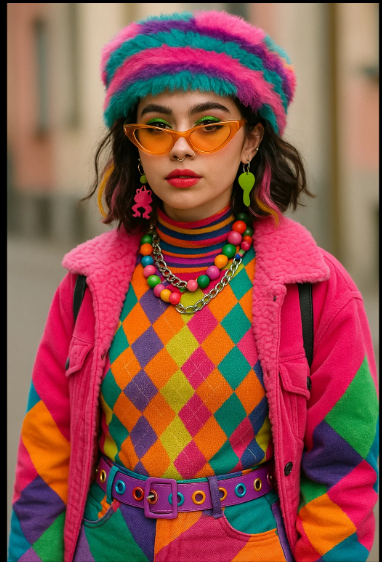
Certain performers transcended their musical genres to become genuine style icons whose influence extended far beyond their fan bases. Their distinctive looks not only defined 80s rock fashion but continue to inspire designers and artists today. You can recreate the 80s rock style with thrifted vintage finds like studded belts, fringe jackets, and acid-wash jeans.
Joan Jett: The Queen of Leather

She created a signature look combining elements of punk, glam, and traditional rock:
- Shag haircut with jet-black color became her trademark
- Leather from head to toe, often in all black
- Minimal but strategic accessories
- Heavy eye makeup paired with a natural lip
- Confident stance and attitude that made everything look cooler
What made Jett’s style so influential was its accessibility—women could adapt her look without professional styling teams, making her version of rock star style attainable for fans. The 80s rock style wasn’t just about fashion—it reflected a rebellious spirit and love for loud, expressive music.
Robert Smith: Gothic Romanticism

The Cure’s Robert Smith created a look that launched a thousand imitators:
- Teased black hair creating a soft, bird’s nest effect
- Smudged red lipstick and dark eyeliner
- Oversized black clothing with romantic elements
- Accessories like crosses and beaded jewelry
- Pale makeup creating an almost ethereal appearance
Smith’s influence extended beyond music to impact film, fashion, and eventually mainstream beauty standards. From oversized bandanas to snakeskin boots, accessories played a major role in completing the 80s rock style look.
Madonna: Pop Meets Rock

While primarily known as a pop star, Madonna’s 80s fashion frequently borrowed and reinterpreted elements of rock fashion:
- Leather jackets paired with tulle skirts created genre-bending contrasts
- Religious imagery repurposed as fashion statements
- Fingerless gloves and layered jewelry
- Visible lingerie challenging notions of propriety
- Constant reinvention keeping audiences guessing
“I’m tough, ambitious, and I know exactly what I want. If that makes me a bitch, okay.” – Madonna
Madonna’s genius lay in her ability to synthesize underground rock fashion elements with pop accessibility, bringing subversive style to suburban malls across America. Today’s designers often reference the 80s rock style in collections that blend nostalgia with modern edge.
Styling Tip: Study vintage photos of these icons and note their proportions and silhouettes, which often translate better to modern wardrobes than specific pieces.
From Underground to High Fashion: The Luxury Crossover
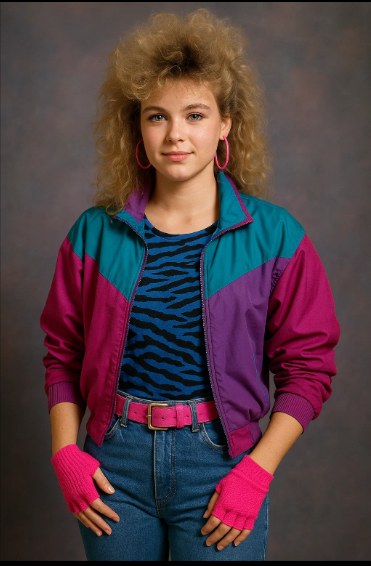
Perhaps the most enduring legacy of 80s rock fashion is how thoroughly it infiltrated high fashion. What began as anti-establishment rebellion eventually transformed the establishment itself. Hair metal bands took the 80s rock style to glam extremes, with glittery outfits and flamboyant stage presence.
Vivienne Westwood deserves special recognition for elevating punk fashion to haute couture. Her “Pirates” collection (1981) and subsequent work took the raw energy of street-level punk and refined it through masterful tailoring and historical references.
Other notable fashion designers who drew from rock fashion:
- Jean Paul Gaultier, whose conical bras for Madonna reinterpreted rock’s gender play
- Alexander McQueen, whose darkly romantic vision owed much to gothic rock aesthetics
- Anna Sui, who frequently referenced the psychedelic and glam rock eras
- John Galliano, who incorporated theatrical elements reminiscent of glam rock
These designers didn’t just borrow aesthetics—they elevated rock fashion legacy by applying couture techniques to concepts that originated in garages and dive bars.
Interestingly, the relationship became reciprocal, with rock stars like David Bowie collaborating with designers and some (like Gwen Stefani) eventually launching their own successful fashion lines.
The Technology Behind the Look

80s rock fashion wasn’t just about design—it was enabled by technological innovations that created new possibilities for self-expression:
- Spandex and elastane developments allowed for the skin-tight silhouettes essential to hair metal
- New synthetic leather alternatives made the rock look more accessible to young fans
- Improved hair products enabled increasingly dramatic styles
- Developments in stage lighting (particularly lasers and strobes) influenced color choices
- Advancements in makeup formulations, especially long-wearing products for performers
Album cover art also played a crucial role in disseminating rock fashion. Before music videos, album covers were how many fans first encountered band aesthetics. Photographers like Mick Rock and album designers like Storm Thorgerson created visual languages that bands and fans adopted and adapted.
Styling Tip: Modern technical fabrics can provide the look of 80s synthetics with better comfort and durability—look for performance materials when recreating these styles. Whether you’re heading to a themed party or just love retro vibes, embracing the 80s rock style adds instant attitude to any wardrobe.
Cultural Impact Beyond Music

80s rock fashion transcended music to influence nearly every aspect of visual culture, from film and television to advertising and graphic design. Its influence can be seen in:
- Films like “The Breakfast Club” and “Desperately Seeking Susan”
- TV shows from “Miami Vice” to “Stranger Things” (set in the 80s but produced decades later)
- Advertising aesthetics that borrowed rock’s edge to sell everything from cars to cologne
- Video game character design, particularly in music and fighting games
- Contemporary fashion’s cyclical revival of 80s elements
The suburban mall adaptation of rock fashion represents an interesting cultural phenomenon. Retailers like Hot Topic essentially commercialized rebellion, making watered-down versions of punk rock fashion and hair metal style available to middle-class teenagers across America.
This commercialization created tension within rock communities, raising questions about authenticity that continue to resurface whenever underground styles enter the mainstream.
Internationally, 80s rock fashion manifested in fascinating regional variations:
- Japan developed “Visual Kei,” an ultratheatrical adaptation of glam and heavy metal aesthetics
- Eastern European rock scenes created distinctive looks using locally available materials during Communist rule
- Brazilian rock fashion incorporated tropical elements and colors into traditional rock silhouettes
Reviving 80s Rock Style Today: Beyond Costume

The enduring appeal of 80s rock fashion lies in its boldness and unapologetic individualism. Modern adaptations work best when they capture this spirit rather than slavishly reproducing specific looks.
Contemporary designers championing 80s-inspired aesthetics include:
- Rick Owens, whose architectural silhouettes echo theatrical rock elements
- Saint Laurent under Hedi Slimane, who directly referenced 80s rock style in multiple collections
- Chrome Hearts, whose silver jewelry continues the heavy metal accessory tradition
- Gucci under Alessandro Michele, incorporating glam rock’s gender fluidity
Celebrities and musicians who effectively channel authentic 80s rock style today include:
- Lady Gaga, whose early career drew heavily from glam rock theatricality
- Miley Cyrus, who has incorporated punk and metal elements into her evolving style
- The Strokes, who updated new wave aesthetics for the 21st century
- Harry Styles, whose gender-fluid approach echoes glam rock pioneers
For those interested in incorporating 80s rock fashion elements into contemporary wardrobes, consider these approaches:
- Choose one signature piece (like a vintage band tee or leather jacket) and build around it
- Update proportions for modern sensibilities—slightly less oversized or tight than original 80s cuts
- Consider sustainable alternatives to the traditionally synthetic-heavy styles
- Focus on quality materials that will age well, unlike some of the disposable fashion of the original era
Collecting Vintage 80s Rock Fashion

For serious enthusiasts, collecting authentic vintage rock clothing has become a significant hobby and investment opportunity. Original tour t-shirts, leather jackets, and accessories from iconic bands can command impressive prices at auction and vintage stores.
What to look for in authentic pieces:
- Original band merchandise will have specific printing techniques typical of the era
- Vintage leather typically has a softness and patina that’s difficult to replicate
- Period-correct labels and manufacturing details
- Signs of natural aging rather than artificial distressing
| Item | Average Price Range (Authentic Vintage) |
|---|---|
| Original tour t-shirts (major bands) | $200-$2,000+ |
| Leather biker jackets (worn style) | $300-$1,500 |
| Studded belts and wristbands | $50-$300 |
| Band pins and patches | $20-$200 |
| Stage-worn items | $1,000-$50,000+ |
Preservation tips for collectors:
- Store t-shirts flat, not hung, to prevent stretching
- Condition leather regularly but gently
- Keep items away from direct sunlight to prevent fading
- Document provenance whenever possible
- Consider professional archival storage for valuable pieces
Styling Tip: Mix one authenticated vintage piece with contemporary basics to create a look that honors 80s rock fashion without appearing costume-like.
FAQs: 80s Rock Fashion Deep Dive
What defined the difference between punk and new wave fashion?
While punk embraced deliberate destruction and DIY aesthetics, new wave incorporated more futuristic elements, cleaner lines, and art school influences. Punk rejected fashion rules entirely; new wave bent them creatively.
Which 80s rock fashion items are worth collecting today?
Original tour merchandise, particularly from landmark tours, holds value. Authentic leather pieces with unique detailing, custom stage clothing, and limited edition items associated with specific albums or events are particularly collectible.
How did female rock stars adapt traditionally male rock aesthetics?
Women like Joan Jett, Chrissie Hynde, and Siouxsie Sioux took traditionally masculine elements like leather jackets and combat boots but adjusted fits and styling. They often added traditionally feminine elements (like makeup or jewelry) in subversive ways that challenged rather than reinforced gender norms.
What were the key differences between British and American rock fashion?
British rock fashion typically incorporated more historical references, class commentary, and fashion-forward experimentation. American styles often emphasized practicality, accessibility, and cultural references specific to American landscapes (particularly cowboy and biker culture).
Which current celebrities best channel authentic 80s rock style?
Beyond musicians like Lady Gaga and Harry Styles, actors including Kristen Stewart, Evan Rachel Wood, and Ezra Miller have effectively incorporated elements of 80s rock fashion into contemporary red carpet and street style, capturing the spirit rather than creating costumes.
Conclusion: Why 80s Rock Fashion Will Never Die
The enduring appeal of 80s rock fashion lies not just in its visual impact but in what it represents: the freedom to reinvent yourself, to reject limitations, and to use personal style as both armor and expression. While specific elements may cycle in and out of mainstream fashion, the underlying ethos continues to inspire each new generation discovering their own voice.
What made the 80s unique was the raw, analog nature of its fashion rebellion. Without social media validation or instant global exposure, style icons developed looks organically, often with limited resources but unlimited imagination. This authenticity continues to resonate even as technologies and platforms evolve.
For those drawn to 80s rock fashion today, the key is not perfect historical recreation but capturing that same spirit of creative defiance. The best tributes to this era don’t just copy its aesthetics—they channel its fearless approach to self-expression through personal style.
As fashion continues its cyclical nature, we can expect elements of 80s rock fashion to continually resurface, reinterpreted through contemporary lenses but always retaining that essential boldness that made the original era so unforgettable.

